Microglial mechanisms drive amyloid-β clearance in immunized patients with Alzheimer's disease
- PMID: 40050704
- PMCID: PMC12092304
- DOI: 10.1038/s41591-025-03574-1
Microglial mechanisms drive amyloid-β clearance in immunized patients with Alzheimer's disease
Erratum in
-
Author Correction: Microglial mechanisms drive amyloid-β clearance in immunized patients with Alzheimer's disease.Nat Med. 2025 May;31(5):1712. doi: 10.1038/s41591-025-03664-0. Nat Med. 2025. PMID: 40155563 Free PMC article. No abstract available.
Abstract
Alzheimer's disease (AD) therapies utilizing amyloid-β (Aβ) immunization have shown potential in clinical trials. Yet, the mechanisms driving Aβ clearance in the immunized AD brain remain unclear. Here, we use spatial transcriptomics to explore the effects of both active and passive Aβ immunization in the AD brain. We compare actively immunized patients with AD with nonimmunized patients with AD and neurologically healthy controls, identifying distinct microglial states associated with Aβ clearance. Using high-resolution spatial transcriptomics alongside single-cell RNA sequencing, we delve deeper into the transcriptional pathways involved in Aβ removal after lecanemab treatment. We uncover spatially distinct microglial responses that vary by brain region. Our analysis reveals upregulation of the triggering receptor expressed on myeloid cells 2 (TREM2) and apolipoprotein E (APOE) in microglia across immunization approaches, which correlate positively with antibody responses and Aβ removal. Furthermore, we show that complement signaling in brain myeloid cells contributes to Aβ clearance after immunization. These findings provide new insights into the transcriptional mechanisms orchestrating Aβ removal and shed light on the role of microglia in immune-mediated Aβ clearance. Importantly, our work uncovers potential molecular targets that could enhance Aβ-targeted immunotherapies, offering new avenues for developing more effective therapeutic strategies to combat AD.
© 2025. The Author(s).
Conflict of interest statement
Competing interests: J.A.R.N. has been a consultant/advisor relating to AD immunization programs for Elan Pharmaceuticals, GlaxoSmithKline, Novartis, Roche, Janssen, Pfizer, Biogen and Eisai. D.B. has been a consultant/advisor relating to AD immunization programs for Elan Pharmaceuticals and Biogen. D.G. has been a consultant/advisor relating to AD therapies for Merck and Novo Nordisk. They have no financial interest in relation to AD immunotherapy. The other authors declare no competing interests.
Figures
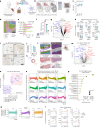
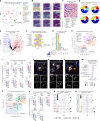



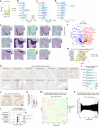
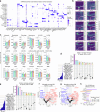
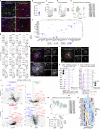

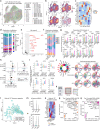
References
-
- Karran, E. & Hardy, J. Antiamyloid therapy for Alzheimer’s disease–are we on the right road? N. Engl. J. Med.370, 377–378 (2014). - PubMed
-
- Holmes, C. et al. Long-term effects of Aβ42 immunisation in Alzheimer’s disease: follow-up of a randomised, placebo-controlled phase I trial. Lancet372, 216–223 (2008). - PubMed
-
- Nicoll, J. A. et al. Neuropathology of human Alzheimer disease after immunization with amyloid-beta peptide: a case report. Nat. Med.9, 448–452 (2003). - PubMed
-
- Nicoll, J. A. et al. Aβ species removal after Aβ42 immunization. J. Neuropathol. Exp. Neurol.65, 1040–1048 (2006). - PubMed
MeSH terms
Substances
Grants and funding
- P30 AG072975/AG/NIA NIH HHS/United States
- RF1 AG015819/AG/NIA NIH HHS/United States
- R01 AG017917/AG/NIA NIH HHS/United States
- AG078713/U.S. Department of Health & Human Services | NIH | National Institute on Aging (U.S. National Institute on Aging)
- P30 CA060553/CA/NCI NIH HHS/United States
- P30 AG010161/AG/NIA NIH HHS/United States
- R01 AG078713/AG/NIA NIH HHS/United States
- R00 NS112458/NS/NINDS NIH HHS/United States
- R01 AG015819/AG/NIA NIH HHS/United States
- WE.06-2023-03/Alzheimer Nederland (Alzheimer Netherlands)
- U01 AG046152/AG/NIA NIH HHS/United States
- U01 AG061356/AG/NIA NIH HHS/United States
- P30 AG066515/AG/NIA NIH HHS/United States
- K99 NS112458/NS/NINDS NIH HHS/United States
- P30 AG072977/AG/NIA NIH HHS/United States
- 23AARG-1026607/ALZ/Alzheimer's Association/United States
- NS112458/U.S. Department of Health & Human Services | NIH | National Institute of Neurological Disorders and Stroke (NINDS)
- A2023003S/BrightFocus Foundation (BrightFocus)
LinkOut - more resources
Full Text Sources
Medical
Miscellaneous

